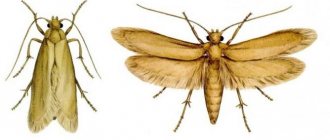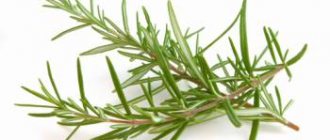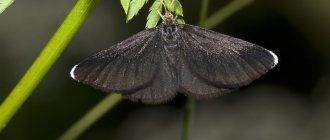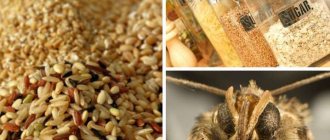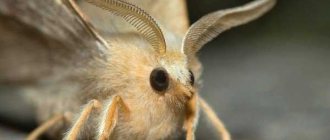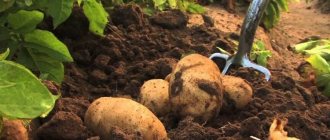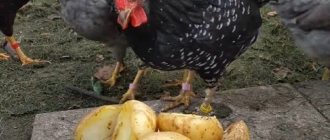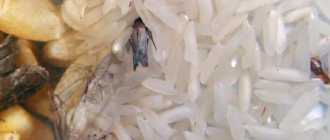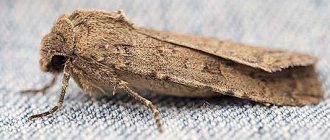The potato moth is a widespread insect that causes harm to potatoes and other nightshade crops. It is difficult to detect moths at the initial stage of crop damage, which complicates the fight against these insects.
Insect larvae destroy young shoots and tubers. Tubers affected by the pest are riddled with numerous winding passages. To combat the pest, chemical, agrotechnical and folk methods are used.
Potato moth - control measures in the garden, in the cellar during storage
Potato moth (Phthorimaea operculella Zell) is a dangerous quarantine pest that can cause significant damage to nightshade crops such as potatoes, eggplants, tomatoes, tobacco, and peppers. The territories where the moth has settled are huge. Today it lives in more than 70 countries around the world. And here in Kuban it was first noticed quite a long time ago - 1981. Why is potato moth dangerous for us gardeners? Something that can destroy all the potato stocks in the cellar. Now, let's talk about what potato moth is and measures to combat it.
Potato moth - development stages and lifestyle
The countries of Central and South America are the birthplace of the potato moth. How does she look? This is a very small, inconspicuous, nondescript butterfly. The wingspan of the potato moth is slightly more than a centimeter - only 12–16 mm. The front wings are gray, they have large dots and stripes, and the hind wings are plain with uneven terry edges.
During the entire period of its existence, the potato moth goes through several stages of development - butterfly, egg, larva, pupa.
The entire development cycle takes 22–30 days in summer, and in winter the same process takes much longer – 2–4 months.
Potato moths are difficult to spot in the garden. This is not the Colorado potato beetle, which can easily be seen at different stages of development on potato bushes at any time of the day. Potato moth becomes active early in the morning, before sunrise, or late in the evening, after sunset.
But during the day, walk along the edge of a potato field and disturb the bushes. If the area is infested with potato moth, then you will see how butterflies, very similar to ordinary clothes moths, fly up over the plantings and, having flown 2-3 m, land on leaves, stems, ground, merge with the background, and immediately become invisible from - due to its small size.
The lifespan of the pest in the butterfly stage is approximately 3 weeks. During this time, she manages to lay 50–200 eggs on the leaves below, on the stems, potato tubers, and fruits of other nightshade plants.
The larva of the potato moth, a caterpillar, matures in the egg in 5–15 days. This is the most dangerous stage of pest development from the point of view of gardeners, since it is the caterpillars that cause the greatest damage to potatoes, tomatoes, eggplants, and other vegetables, damaging tubers, fruits, stems, and leaves.
The larva (caterpillar) of the potato moth usually has a yellow-pink or slightly greenish color, the body length is from 1 to 1.3 cm. The lifespan of the caterpillar is 10–48 days, during which time it molts four times.
It enters the pupal stage on plants or soil, cracks in walls or floors, if it ends up in a storage facility or cellar.
The caterpillar or pupa spends the winter in the soil close to the surface or under abandoned plant debris. And in the spring, gray butterflies fly out of the overwintered pupae.
Potato moths of any stage of development can be found in the garden all season, from early spring to late autumn. And after storing, for example, infected potatoes for storage, in the presence of favorable conditions, the development of the pest also continues in winter.
Potato moth caterpillars are particularly resilient. Potato tubers freeze when the temperature drops to -1ºС, but the pest will survive at this temperature.
The best conditions for moths will be a temperature of +22–26°C with an air humidity of no more than 80%. If the air warms up above +36°C or cools below -4°C, then the insect will die, and it does not matter at what stage of its development it will be.
Fighting potato moth in the garden
So how can we determine that potato moth has settled in our garden? Only after a thorough inspection of the plants. The first thing that catches your eye is the presence of excrement on the stem, leaves, and fruits.
Caterpillars penetrate into tomatoes, eggplants, peppers through the stalk or from the opposite end of the fruit, where the flower was. And in potato tubers - through the eyes, the place of stolon attachment or minor damage, cracks.
There can be up to 6 larvae in vegetables and potato tubers at the same time, but even one is enough to spoil the entire fruit.
It is mainly potato growers who suffer large losses from potato moths. For this reason, it is important to prevent the pest from getting inside the potatoes by carrying out regular preventive measures.
- Firstly, potatoes must either be planted deeper than usual, or hilled up more often and higher - the height of the soil layer above the tubers must be at least 15 cm, since it has been noticed that most often the pest invades tubers located close to the surface of the earth.
- Secondly, potatoes should be harvested before the tops dry out. 1-2 weeks before harvesting, the green mass is mowed and immediately removed from the field so that the caterpillars do not invade.
- Thirdly, if you notice traces of a pest in your field, you should immediately treat the entire area using chemicals. For potato moths, the same remedies are used as for the Colorado potato beetle - for example, fastak, decis. Only 20 days after processing, potatoes can be eaten.
- Fourthly, dug up tubers should be removed from the field as quickly as possible, since just a couple of hours is enough for butterflies to lay eggs and ruin the harvest.
Fighting potato moths will, of course, add more trouble to gardeners. But your efforts will not be in vain - you will save the harvest.
How to deal with potato moth in the cellar
Before storing the crop, if you notice the presence of potato moth in your area, you need to treat the tubers. How to treat potatoes against potato moth? There are various ready-made preparations, as well as those that are easy to prepare yourself by combining several ingredients.
The remedy for potato moth is a mixture of two biological drugs: lepidocide and planriz. The first drug is needed to combat this pest, and the second is needed to prevent fungal diseases.
The solution is prepared quite simply. The amount of ready-made solution depends on the size of your crop.
To 100 liters of water you need to add 2 liters of lepidocide + 0.5 liters of planriz. Potatoes are immediately dipped into the resulting mixture (it is not recommended to store it) for 5–10 minutes. Then the tubers are dried.
After such treatment, the crop can be safely harvested for storage. It will be suitable for food in 2-3 days. By the way, such biological treatment will be an excellent preventive measure before planting potatoes.
There is another option for treating potatoes where moths have appeared - a 1% solution of bacterial preparations (lepidocide, dendrobacillin or bitoxybacillin). For 150 liters of water you will need approximately 1 liter of this solution. The processing is the same - the potatoes need to be immersed in the resulting mixture for 15–20 minutes.
Biological drugs have a short shelf life of 1–2 years.
Keeping the entire potato crop in a biosolution is a labor-intensive operation, but it is more likely to be feasible for those who grow potatoes in small quantities for themselves. Therefore, it is advisable to pay more attention to preventive measures
In addition, you should inspect the cellar itself or other storage location. If there are traces of potato moths, then the room and containers must be disinfected by whitewashing with quicklime or fumigants (means used to fumigate rooms). Experts recommend using a smoke bomb for the cellar against potato moths “Gamma” or “FAS”.
Spraying infected potatoes in the cellar with a solution of the Entobacterin microbiological preparation will significantly reduce crop losses. It is effective against flying insects, that is, against the potato moth, which, after treating the room, will lose activity and will not be able to lay eggs in the tubers.
By the way, keep in mind that at a temperature of 3–5°C this pest does not develop and dies, so it is better to store the crop in a cellar in such conditions.
At the moment, in Russia, it is the potato moth that most often spoils the potato harvest. Measures to combat this insect are not as simple as it might seem.
- Healthy seeds should be planted at the correct depth.
- Do not start planting potatoes - hill them up higher often.
- Destroy the tops in a timely manner before harvesting if moths are found in the field.
- Go through the potatoes in the cellar more often to remove infected tubers.
- Treat storage facilities, cellar, and infected tubers every 10–12 days with recommended preparations.
These actions will ensure crop protection from potato moth.
ogorod23.ru
Potato moth. Fighting potato moth.
Are there wormy tomatoes? This question will be considered ridiculous by any gardener or gardener, regardless of whether he grows them or not. And he will be wrong!
Fluorimea, or potato moth, is a highly specialized pest that damages both cultivated and wild nightshade plants. Tobacco and potatoes are especially affected by it. But the moth caterpillar also does not refuse to snack on the fruits of tomatoes or eggplants and makes passages in them, like a worm in an apple.
This pest is relatively new to our gardens - just ten years ago, practically nothing was heard about it. A small heat-loving insect came to us from Central and South America, which is its historical homeland. Currently, the appearance of potato moth has been recorded in seventy countries around the world and the “sphere of influence” continues to expand. The pest can develop not only in summer, on plantings, but also during potato storage, if the temperature does not drop below +10 °C. Fluorimea is especially harmful in the southern regions of the country. But, as practice has shown, moths easily adapt to our temperate latitudes, wintering in warm potato storage areas.
The potato moth butterfly is quite small, with a wingspan of 1.2 - 1.6 cm. The front wings are gray-brown with yellow scales and brown streaks. The hind ones have fringe and retracted outer edges. The eggs are oval, up to 0.8 mm long, white, yellow or orange - depending on the stage of development. The eggs take three days to two weeks to develop. The caterpillars are naked, with small bristles, reaching a length of no more than a centimeter. They are grayish-green or yellowish-pink in color with a longitudinal stripe on the back. Brown pupae are covered with a silvery cocoon.
Moth butterflies sense the smell of potatoes well and are able to find tubers even under burlap covers. Often they manage to colonize potatoes that have not been removed from the field with their eggs in just a day.
The lifespan of one generation of potato moth varies depending on the temperature and can range from a month to three and a half. During this time, the caterpillar is able to completely eat up more than one potato tuber. In areas with warm climates, the potato moth produces up to eight generations of pests and can cause damage no less than the Colorado potato beetle. Potatoes damaged by it noticeably reduce yields, and their marketable and seed qualities deteriorate. During storage, the tubers rot and infect their healthy neighbors.
Signs of potato moth damage
— “mining” of stems and leaves; - narrow wormholes under the skin and inside potato tubers, in the pulp of tomatoes and eggplants; the presence of caterpillar excrement in these passages; - death of the tops or stems above the place where the damage occurred; - entwining leaves and stems with cobwebs; - dry or wet rot that forms in tissues damaged by tunnels.
Fighting potato moth
To successfully combat potato moth, it is necessary to carry out a whole range of preventive and extermination measures:
— strictly observe all quarantine restrictions; — systematically inspect plantings of potatoes and other nightshade crops, as well as fruits and tubers during storage; - plant potatoes only with healthy tubers and no smaller than 14 cm from the surface; — purchase planting material only from reliable manufacturers; - dig deep into the soil for potatoes twice a year - in spring and autumn; — warm up and germinate potato tubers before planting; - Hill up the potato bushes in time so that all the tubers are covered with a layer of soil; — harvest potatoes without waiting for the tops to dry; - mow potato tops no later than a week before harvesting; — treat potato tubers with synthetic peritroids to prevent them from being colonized by moth caterpillars; — carry out thorough disinfection in rooms intended for storing potatoes and other nightshades; — maintain the temperature in potato storage facilities at 3–5 °C above zero; — before storing, treat the tubers with biological preparations Bitoxibacillin or Lepidocid in accordance with the instructions; — during the growing season, spray potato plantings with Citkor, Tsipershans, Iskra, Decis or other similar preparations, stopping treatments no later than 20 days before the start of harvesting; some of them can be combined with measures aimed at combating the Colorado potato beetle, using additional spraying in July and August; — carry out preventive treatment of tomatoes, peppers and eggplants with biological preparations; — destroy weedy nightshade plants near plantings of potatoes, tomatoes, peppers, eggplants and tobacco.
The potato moth, as an overseas guest, has no natural enemies that would help fight it and curb its spread. Therefore, the introduction of quarantine in places where butterflies or fluorimea caterpillars appear is a justified and necessary measure. It is prohibited to export or send by parcel not only potatoes, but also peppers, eggplants, tomatoes and other nightshade products from these areas. Tubers and fruits affected by moths can only be used for food purposes, and all plant residues must be thoroughly destroyed.
indasad.ru
Distinctive features of the insect
Despite the heat-loving pest, whose ability to reproduce remains in countries with an average annual temperature of 10 degrees, today the moth is widely known in many countries, including Russia.
The insect looks rather inconspicuous ; its dirty gray wings are covered with dark spots; when they fold, two distinct dark stripes are formed.
The life cycle lasts 30-35 days, and in winter it extends to several months.
The insect dies at a temperature of -4 degrees, which limits its distribution in northern latitudes.
Caterpillars can remain alive in potato tubers; they often move in this form to storage facilities where they reproduce, and in the spring they are buried again in the ground with seed material.
Life cycle of an insect
Pupae and butterflies can overwinter in the open ground under a layer of leaves; insect caterpillars feed on various nightshade plants (potatoes, peppers, tomatoes, eggplants, and even belladonna, as well as wild nightshades).
The caterpillars also damage tomatoes , which ensures the widespread spread of potato moth; insect larvae feed on potato tubers and leaves.
Pest butterflies are active at night and have many enemies; they serve as food for other insects, birds and bats.
The lifespan of an adult is a maximum of several weeks, during which time the pest has time to mate. In the middle zone, an insect manages to create 3-4 generations in one summer.
The pest multiplies equally quickly in nature, on agricultural lands and in closed warehouses.
In the last two places, its reproduction is almost completely uncontrolled by enemies, as a result of which its reproduction proceeds at an accelerated pace, and it is the caterpillars that cause the main damage.
You can learn in detail about how to get rid of spider mites and the development of the pest on house plants from our article.
You can learn about the most effective anti-bedbug medications that will really help get rid of insects in this article.
Reproduction nuances
The female makes up to 4 clutches in summer. They contain on average up to 200 eggs. She tries to distribute them among a large number of plants. In this case, the offspring will have a sufficient amount of food, which will ensure rapid growth and development.
Eggs and larvae
The potato moth spends most of its life in the form of eggs and larvae. The optimal temperature for their development is +9…+28°C. The warmer it is, the faster the larvae hatch. In summer they appear on average after 5-7 days, and in winter - after 18-25 days.
The larva that emerges from the egg immediately begins to feed. Its growth is possible at +6…+25°C. Temperature affects the larval metabolism. In summer, it takes 10-20 days to accumulate nutrients, and in winter – up to 35 days. After this, the larva forms a cocoon. Metamorphosis from a larva to an adult takes 5-6 days in summer, and up to 90 days in winter.
Stages of development of potato moth.
Harm of potato moth
- weakening of bushes due to damage and destruction of leaves;
- damage to tubers, reduction in crop quality;
- reduction in the volume and quality of seed;
- death and weakening of young pepper and tomato bushes.
Of particular danger is the simultaneous infestation of potatoes by 9-10 caterpillars, as a result of which the tuber becomes like a sponge with the core completely eaten away.
If there are a large number of insects and the conditions are comfortable for them, the rate of their reproduction exceeds the rate of development of the forage crop.
In spring, the larvae destroy tender young seedlings, then they harm adult plants; the maximum number of caterpillars appears by the time fruits and tubers develop on the bushes.
Potatoes from places where up to 80% of the crop is infected are not exported due to loss of processing and storage ability.
How to get rid of woodlice in the house? Find out some practical tips and tricks in our article.
What and how to poison ants? The answer to this question can be found here.
Prevention of occurrence
Prevention of potato damage includes the following measures:
- Limiting the import of seed from regions where cases of infection have been recorded.
- Regular inspection of green bushes to promptly identify signs of damage to plant leaves.
- Treatment of root crops with bacterial insecticidal preparations before planting.
- Cutting and burning the tops a few weeks before harvest.
- Destruction of tubers damaged by larvae.
Methods of pest control
Ready-made products
100% effective methods for controlling insects have not yet been developed; the greatest results are achieved through an integrated approach, a combination of preventive and elimination measures.
Products based on the bacteria Bacillus thuringiensis Entobacterin, Dendrobacillin, Lepidocid, Bitoxibacillin show high efficiency.
They are used to treat plants at any stage of development up to the appearance of ovaries, which ensures a decrease in the fertility of females, the death of some larvae, as well as a delay in the development of the insect at each stage of development.
Bitoxibacillin has also been successfully used to kill potato moths..
A solution of methyl bromide, which has a disinfecting effect, allows you to fight insects after harvesting; the solution is used to treat tubers stored for storage.
Other remedies, folk methods
As a means of combating insects, competent crop rotation, hilling of tomato and potato bushes, as well as planting exclusively healthy tubers to the maximum depth allowed for the variety are used.
An excellent preventive means of control is to grow exclusively early varieties of potatoes , against which the pest is powerless.
Special traps for butterflies and larvae are also used as a means of pest control.
Before sowing, the tubers are carefully checked, and potatoes with signs of damage are eliminated.
Although this will not help get rid of the pest completely, it will reduce the scale of damage.
A significant number of moth larvae can be killed by heating the tubers at a temperature of 40 degrees for several hours.
The nightshade weed Datura also attracts pests, so it is important to control the growth of weeds at the borders of the cultivated area .
One of the effective methods of control is considered to be getting rid of all wild nightshades, which are natural reservoirs for moths, which easily move from them to garden crops.
Farmers from South Africa use a species of wasp that is common only in the southern hemisphere and is a parasite of moth larvae as a means of control.
Potato moth: appearance, harm, control measures
Content:
- Anti-moth tablets: how to use
Traditionally, the Colorado potato beetle is considered the main potato pest. However, potato moth is no less dangerous: measures to combat it do not always give the expected results, and given that the temperature comfortable for this insect above +6 degrees remains in the middle zone for more than six months, during this time the moth manages to lay tens of thousands of eggs and grow several generations of caterpillars, which are the larvae of the potato moth.
Not everyone knows what potato moth is and how to fight it. Readers who, even after reading this article, do not feel confident that they can deal with the pest on their own, it is advisable to seek advice and help from a company that professionally deals with the destruction of harmful insects.
We also recommend watching:
- Medvedka, photo and description of how to deal with the pest
Not all gardeners know what a mole cricket looks like. Photos, descriptions, how to fight, methods of control, the experience of gardeners will help preserve the harvest and get rid of this insidious pest. Not…
- Shrew - photo of the pest and description of how to deal with it?
A very small animal - a shrew. Photos and descriptions of how to fight the pest using different methods in the country house, vegetable garden, garden - you will learn about all this...
- How to fight aphids, where to start, how to treat plants against aphids
Fighting aphids in the garden is not a very pleasant process, but don’t give your harvest to them to eat. Yesterday I came, as usual, to the dacha...
- Late blight, late blight of potatoes, how to deal with a dangerous disease
It has long been believed that the most dangerous disease of nightshades, including potatoes, late blight, is transmitted only with planting material. In the soil under our conditions, the harmful fungus does not overwinter.…
- Potato peelings as fertilizer – for which plants can or cannot be used?
Many of you have probably heard that potato peelings can be used as organic fertilizer for gardening. This is true, since they contain starch, potassium, and other valuable...
- Fight against Khrushchev, one of the folk methods
Someone’s worst enemy on their property is a mole cricket or a wireworm. And some have Khrushchev. The fight against Khrushchev - can it be effective? Me too…
How to get rid of potato moths in garden beds
In order to start an effective fight, you need to know the enemy by sight. Therefore, let's talk about what a pest of potato and other plants looks like.
Appearance of an adult potato moth.
The adult is a small gray-brown butterfly, with wings framed by black stripes and dotted in a dark tone. Their span does not exceed 12-14 mm. The caterpillar larva is greenish, pink-white or dirty beige in color, its length can reach 10-12 mm. Photos of representatives of this species will tell you more clearly and revealingly about how the potato moth is recognized among other insects.
The potato moth larva is the first stage of the life cycle.
The life cycle of a potato pest is divided into several stages: a larva emerges from an egg laid by a butterfly, then it turns into a pupa, and after that it becomes an adult – a butterfly, which has the ability to lay eggs. In the summer, this entire process takes moths no more than a month. In winter, the duration of ripening increases to 2-4 months, depending on how favorable the conditions are.
Potatoes spoiled by potato moth.
In addition to potatoes, this parasite enjoys feasting on other garden crops:
- tomatoes;
- eggplants;
- physalis and even tobacco leaves.
In addition to leaves, the caterpillars eat stems, fruits and tubers. They penetrate into potatoes, as a rule, after the above-ground part of the plant (tops) has dried, gnaw through the skin and get into the pulp. At the place where the moth passed, the potatoes begin to turn into dust and become unsuitable for food.
Although the moth is called potato moth, it also spoils other vegetables and even berries.
The destruction and prevention of moths in the beds is achieved by treatment with preparations in which the main active ingredient is cypermethrin, as well as by high hilling, which prevents exposure of tubers, and early harvesting - before the tops dry out.
Lifestyle
The life of the pest is associated with plants belonging to the Solanaceae family. Adult moths have a good sense of smell. She can even smell those tubers that were packed in canvas bags.
Adults cannot eat fully and live off the nutrients accumulated in the larval form.
At the same time, the insect is able to travel up to 3 km in search of plantings necessary for feeding the young.
What do potato moths eat?
Fluorimea feeds not only on potato tubers and tops. The diet of this pest includes the following crops:
- tomatoes;
- petunias;
- pepper;
- physalis;
- tobacco;
- eggplant.
In addition, some weeds may suffer from this insect, incl. Datura, black henbane and wolfberry.
Wintering of the pest
In warm regions, formed potato moth pupae overwinter under the remains of tops. In the northern regions, immediately after the tops dry out, the caterpillars move into the ground and infect the tubers. Subsequently, they pupate and remain in the soil at a depth of up to 20 cm. The emergence of adult individuals in this case occurs in May.
If the caterpillars are not yet fully formed, they remain in the tubers. They are dug up along with potatoes and stored in cellars. In larvae kept in a cool room, development proceeds more slowly. They reach adulthood only in spring.
Potato moth: storage measures or how to save the harvest
Unprepared ordinary people are often confused when they suddenly discover moths in potatoes: they don’t know how to deal with them, moreover, they don’t realize the amount of damage that such parasitic insects can cause to potato stocks.
Leaves of a plant on which potato moth has infested.
As mentioned earlier, this pest does not like the cold and dies even at low temperatures above zero. Therefore, the main thing is to ensure appropriate temperature conditions in the place where your supplies will be stored. The optimal level is +2-+3 degrees: in this case, the potatoes will not freeze and begin to deteriorate, and the moth larvae that get into the bins along with the tubers will die safely.
If for some reason it is not possible to set the desired temperature in the storage, there are other answers to the question of how to get rid of potato moths in the basement, which even non-professionals can do:
- Tubers should be regularly sorted and inspected; damaged ones should be destroyed;
- After harvesting, it is recommended to treat potatoes with a preparation based on lepidocide;
- if moths were previously found in the room, before a new laying it should be disinfected with quicklime;
- Regular spraying with Entobacterin will help destroy butterflies that lay eggs on tubers.
Quarantine measures
Quarantine measures include:
- Compliance with established rules for transporting tubers outside the phytosanitary zone.
- Examination of potatoes by a laboratory that issues certificates of the absence of pests in the samples.
In addition, there are a number of phytosanitary measures that are aimed at suppressing the source of pest infestation. These include:
- Use only healthy seed.
- Maintain a distance of at least 1 km between the place where root crops are stored and new sown areas.
- Destruction of tops before they are completely dry.
- Separate storage of tubers from different fields.
- Treatment of fields where moths were detected with insecticides.
Anti-moth tablets: how to use
It should be understood that the usual tablets that you put in the closet to kill clothes moths are useless in the fight against potato pests. There are, however, special tablets for potato moth: they mean tablet preparations, for example, “Zipershans” or “Iskra”, which are diluted in water for spraying plantings.
Before using potato moth tablets, be sure to read the instructions.
Potatoes, tomatoes, peppers and other crops susceptible to pest invasions should be treated with such solutions twice, the last time no later than 20 days before the start of harvest.
Many people confuse potato moth with food moth, and therefore choose the wrong method to combat it. For example, a trap for food moths, which effectively rids you of contenders for your supplies in the kitchen cabinets, will not give the expected result if it is placed in the basement where potatoes are stored. In order to understand who exactly threatens the integrity of your products, you can compare photos of potato moths and food parasites - the difference is visible to the naked eye: food moths have a darker color.
Unlike food potato moths, they are lighter in color.
Quite often this pest gets into the area with seed material. If potatoes intended for planting are stored in a warm place, the larvae can survive the winter. Therefore, before starting sowing work, it should be treated with disinfecting solutions, for example, methyl bromine or carbon tetrachloride. Then the risk of rapid population spread will be significantly reduced.
Store potatoes at optimal temperatures and then potato moths will not be able to harm you.
Unfortunately, the fight against potato moths that have overwintered in plant debris located on the site turns out to be ineffective. With the first warmth, it begins to actively reproduce. In this case, it is recommended to remove potato tops, tomato and pepper stems, eggplant and squash leaves from the ground after harvesting. And at the first appearance of larvae and butterflies, begin to destroy them using the methods described above.
StopKlopam.ru
Biological drugs
We must not forget about biological means of combating potato moth. As a rule, these are toxins, the effect of which is to damage the digestive tract and disrupt the digestion process of pests, but they can also have a paralyzing effect on parasites. You can mention such products as “Bitoxibacillin”, “Kinmiks”, “Lepidotsid”, “Entobacterin” and others. The good thing about biological products is that they degrade quickly without endangering the health of people and animals.
How to get rid of potato moth
Margot
Treat potatoes with Lepidocide 2 times. Treat the cellar with Peshka-S.
Diana Diehl
To destroy the butterflies and caterpillars themselves, the following means are used: Preparations based on the bacteria Bacillus thuringiensis - Bitoxibacillin, Dendrobacillin, Entobacterin, Lepidocide. They treat bushes at any stage of development before the appearance of ovaries, and such measures ensure the death of some of the larvae, a decrease in the fertility of females and a delay in the development of moths at each stage. Bitoxibacillin is successfully used to destroy potato moths. A solution of disinfectant methyl bromide, which allows you to fight potato moths after harvesting potatoes - the solution is used to treat tubers stored for storage. Methyl bromide Special traps for butterflies and larvae. Measures to combat potato moth also include proper crop rotation, hilling up potato and tomato bushes, and planting only healthy tubers to the maximum depth for the variety. A good preventative way to get rid of potato moth is to grow only early varieties of potatoes, which are practically resistant to the pest. Before sowing, the tubers themselves must be carefully checked and those that show signs of damage must be eliminated. This will help, if not get rid of potato moth completely, then at least significantly reduce the extent of the area affected by it. It is even better to warm the tubers for several hours at a temperature of 40°C - this will not reduce their germination, but will kill a significant part of the moth larvae. It is also very important to control the growth of weeds at the borders of the cultivated area. Datura weed belongs to the nightshade family and can also attract potato moths. All wild nightshade plants near the site are natural reservoirs of the pest, from which the moth easily moves to garden crops. Note: Many farmers in South Africa attract a special type of wasp to their farms, which is a parasite of potato moth larvae. These wasps do not live in the northern hemisphere. Today, many countries observe quarantine measures against potato moth. For example, the import of potato tubers by private individuals is prohibited to Ukraine, and potatoes imported to Australia are required to be heated and treated with insecticides. But even despite such measures, the potato moth successfully continues to conquer the world.
Tips and tricks
Farmers have noticed that if a little wood ash is poured into each hole during planting, the likelihood of tubers being damaged by caterpillars is reduced.
For prevention, proper crop rotation is observed: potatoes are not planted on the site after growing other nightshade crops.
Important! It is not recommended to plant potatoes in one area for several years in a row.
To protect root crops from damage by moth larvae, hill up the beds regularly.
Watering potato bushes using the sprinkling method will significantly reduce the number of pests. This will lead to the death of most of the adult butterflies.
